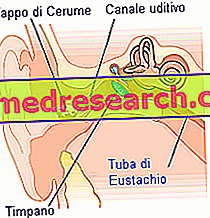Generality
The iliac bone is the hip bone and represents, along with the sacrum and coccyx, one of the bones of the pelvis. It is an even element, which develops on the sides of the just mentioned sacred bone.
From the anatomical point of view, the iliac bone can be divided into three regions: an upper region, called ilio; a lower-posterior region, called ischio; finally, a lower-anterior region, identified with the term pubis.
Each iliac bone forms 3 joints: the sacral iliac joint, with the sacrum; the hip joint, with the femur; finally, the joint known as the pubic symphysis, with the contralateral iliac bone.

The iliac bone is an insertion site for muscles of the abdomen, back, thigh, etc.
The pathologies that can affect the iliac bone include: bone fractures and hip pathologies.
What is the iliac bone?
The iliac bone, also known as hip bone or coxal bone, is the even and symmetrical bone, which, together with the sacrum and coccyx, constitutes that anatomical structure identified with the name of pelvic girdle .
IT'S A BONE OF THE BASIN
The hip bone, the sacrum and the coccyx represent the pelvic bones (or pelvic bones ).
The anatomists call the lower part of the trunk of the human body the pelvis or pelvis .
Located between the abdomen and thighs, the pelvis includes, in addition to the pelvic bones: the so-called pelvic cavity, the so-called pelvic floor and the so-called perineum.
Anatomy
The iliac bone constitutes the lateral portion and the anterior portion of the pelvic girdle.
Each iliac bone, in fact, develops from the lateral edges of the sacrum, continues downwards and, at the same time, converges forward, joining the contralateral iliac bone and forming the so-called pubic symphysis .
From this description, the reader should understand that there is a right iliac bone and a left iliac bone.
The iliac bone consists of three regions, which merge with each other at the age of 14th and 15th. The three regions in question are the bones known as: ilio, ischio and pubis
ILIO
The ilium represents the upper portion of the iliac bone; of the latter, it is also the largest and largest portion.
From the anatomical point of view, it presents two relevant sections, known as the body of the ilium and wing of the ilium .
Bordering on ischium and pubis and situated above them, the body of the ilium forms part of the acetabulum ; the acetabulum is the hollow within which the head of the femur takes place, in what is called the hip joint .
Moving on to the wing of the ilium, this is the section that:
- Resides above the body;
- It connects to the sacrum, forming the so-called sacral iliac joint ;
- It gives life to a bone structure, certainly known to most people, called with the name of iliac crest .
On the wing, two surfaces are recognizable: the inner surface (or iliac fossa ) and the external surface (or gluteal surface ). The iliac fossa is concave and represents the point of origin of the iliac muscle ; the gluteal surface, on the other hand, is convex, has semicircular lines - called gluteal lines - and represents the attachment point of the gluteal muscles .
Furthermore, on the lateral edges, with both anterior and posterior orientation, the wing has bony prominences that are called thorns : oriented forward, the so-called anterior superior iliac spine and anterior inferior iliac spine develop; on the other hand, the so-called posterior superior iliac spine and the inferior posterior iliac spine come to life.

ischium
The ischium represents the lower and posterior part of the iliac bone. Therefore, it lies inferiorly on the ilium and behind it and on the pubis. Of the three bony elements that form the iliac bone, the ischium is the strongest and most resistant.
The ischium consists of three portions: the body, the lower branch and the upper branch .
- The body is the bone portion that interposes between the lower branch and the upper branch of the ischium.
- The inferior branch is important because it combines with the inferior branch of the pubis, giving life to the so - called ischio-pubic branch . The ischio-pubic branch forms a hole, which is called the obturation hole . Through the obturator hole, the obturator nerve, the obturator artery and the obturator vein pass.
- Finally, the upper branch is relevant because it includes about one third of the acetabulum and a bony prominence called the ischial spine .
The ischium is the portion of the hip bone, which, when one sits and projects oneself forward, supports the weight of the human body. To be precise, the anatomical region of the ischium on which the weight of the human body bears when seated is the so-called ischial tuberosity .
The ischium inserts two important ligaments: the sacrospinous ligament and the sacrotuberous ligament .
PUBIC
The pubis represents the anterior part of the iliac bone. In fact, he resides both before the ilium and before the ischium.
It includes three relevant portions, which are: the body, the upper branch and the lower branch .
- The body locates between the inferior branch and the superior branch and is important, because, articulating with the pubis of the contralateral iliac bone, it forms the so-called pubic symphysis.
- The upper branch extends laterally to the body and is important, because it constitutes another part of the acetabulum (about a fifth); its medial region is flat, while its lateral region is prismoid.
- Finally, the lower branch projects in the direction of the ischium and joins with the latter, forming the so-called ischio-pubic branch; it is thin and flat.
JOINTS
Each iliac bone takes apart from as many as 3 joints: the sacral iliac joint, the hip joint and the pubic symphysis.
Briefly, the sacral iliac joint is the joint element that connects the lateral surface of the sacrum to the ilium of the iliac bone. Clearly, if the iliac bones are two, the sacral iliac joints are also two.
The hip joint, or simply hip, is the joint element that puts the acetabulum in communication with the head of the femur. Inside the pelvic girdle, the hip is the junction point between the axial skeleton and the skeleton of the lower limbs; it is essential for locomotion.
Finally, the pubic symphysis is the joint that connects, on the front, the two iliac bones.
Function
Premise: the bones of the pelvis have different tasks: first, to support the upper part of the body; then, connect the skeleton of the latter to the lower limbs; finally, to insert muscles, ligaments and tendons, which are fundamental for walking and not only.
In addition to creating an extremely important articulation such as the hip, the iliac bone gives rise to and insertion into muscles with different sites, including: the abdomen, the back, the thigh, etc. Schematically, the muscular elements that have contact with the iliac bones are:
- The abdominal muscles known as:
- External oblique muscle
- Internal oblique muscle
- Transverse abdominal muscle
- The back muscle known as the multifidus muscle
- Gluteus muscles, therefore:
- The gluteus maximus muscle
- The gluteus medius muscle
- The small gluteal muscle
- The lateral rotator muscles of the hip, known as:
- Piriformis muscle
- Upper twin muscle
- Internal shutter muscle
- Lower twin muscle
- External shutter muscle
- The ischiocrural muscles (hamstrings, in English), that is:
- The biceps femoris
- The semitendinosus
- The semimembranosus
- The anterior thigh muscles, that is:
- The rectus femoris muscle
- The sartorius muscle
- The large dorsal muscle
diseases
Among the pathologies that can affect the iliac bone, bone fractures and hip pathologies, with specific involvement of the acetabulum, certainly deserve a mention.
ANCIENT PATHOLOGIES
The two most important hip pathologies, which can derive from an abnormality of the acetabulum of the iliac bone, are: coxarthrosis (or osteoarthritis of the hip) and congenital dysplasia of the hip .
BONE FRACTURES
The fractures of the iliac bone are traumatic injuries, which usually occur after accidental falls, car accidents or impacts during the practice of sports where physical contact is required (eg rugby, American football, etc.). ).
The sections of the iliac bones most prone to fracture are: the wings of the ilium and the branches (upper and lower) of the pubis.
Fractures of the iliac bone can be divided into two categories: stable fractures and unstable fractures. All fractures characterized by a single breaking point are stable; all fractures marked by a two or more break points are unstable.
A severe fracture of the iliac bone can result in damage to the bladder or urethra.



